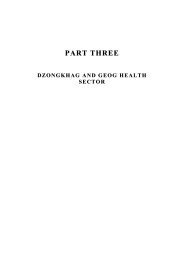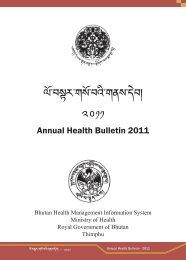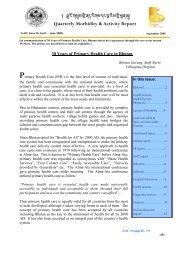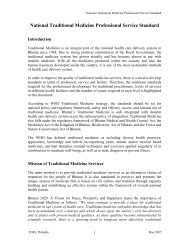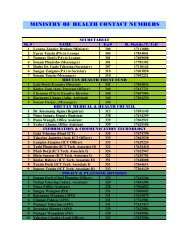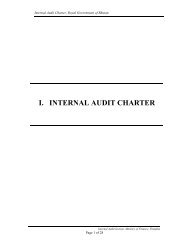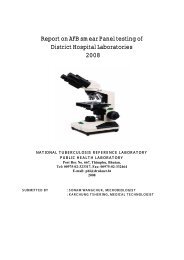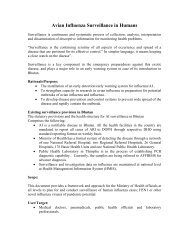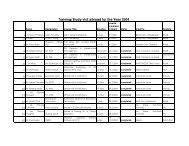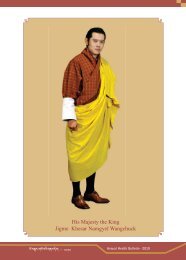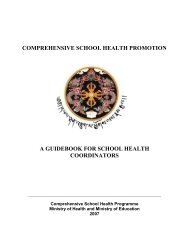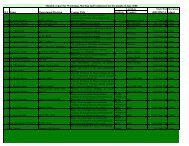ANNUAL HEALTH BULLETIN 2004 - Ministry of Health
ANNUAL HEALTH BULLETIN 2004 - Ministry of Health
ANNUAL HEALTH BULLETIN 2004 - Ministry of Health
Create successful ePaper yourself
Turn your PDF publications into a flip-book with our unique Google optimized e-Paper software.
Complied<br />
by: Dr. K.C Buragohain, JDWNRH, RHU<br />
Mr. Sonam Wangdi,APO,RH<br />
The programme would like to extend our gratitude for the guidance, help and co-operation from the<br />
following <strong>of</strong>ficers and staff at different stages <strong>of</strong> this study.<br />
1. DMOIDHSO Trashigang,Sarpang, and Punakha Dzongkhag<br />
2. HAJANM/BHW- Kanglung, Norbuling and Kabesa BHUs<br />
This report would not have been possible without the untiring efforts <strong>of</strong> the trainees and facilitators<br />
<strong>of</strong> RH training conducted at Kanglung BHU, Gaylegphug NMCP training center and Punakha<br />
hospital<br />
Contraceptive prevalence rate and fertility rates are two critical indicators <strong>of</strong> quality <strong>of</strong> family<br />
planning services provided to the communities. In many <strong>of</strong> the <strong>Health</strong> facilities there was an<br />
observed lack <strong>of</strong> understanding about source <strong>of</strong> information and estimation <strong>of</strong> these indicators.<br />
The RH training <strong>of</strong> the trainers in three regions- Kanglung for eastern region, Geylegphug for Central<br />
region and Punakha for western region provided good opportunity to train the trainers as a part <strong>of</strong> the<br />
training. It was felt tlult the same training CQu14be carri~ out when district level training is taken up<br />
in respective district.<br />
1. To train the participants on how to estimate Contraceptive Prevalence Rate and Fertility Rate.<br />
2. To estimate Contraceptive Prevalence Rate and method use in these gewogs<br />
3. To find out the common problems faced by the women while using the family planning<br />
methods and reasons for not using.<br />
At the time <strong>of</strong> the training it was not possible to visit each and every household in the areas <strong>of</strong> the<br />
BHUs located in those gewogs. To make the study statistically significant for the areas the strategy <strong>of</strong><br />
thirty clusters randomized sample survey was adopted. Each household was considered to be a unit.<br />
The households were arbitrarily numbered from the village household information available in the<br />
BHUs <strong>of</strong> the area. The first household in each cluster was selected randomly and continued with next<br />
nearest house till required numbers <strong>of</strong> women were interviewed. Seven women <strong>of</strong>reprodYctive age<br />
(15-49 years <strong>of</strong> age) from each cluster were interviewed for collection <strong>of</strong> information.<br />
Standard tools to collect information was developed which contained information on total



